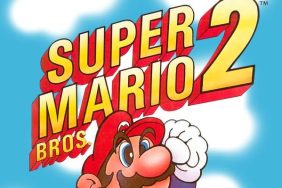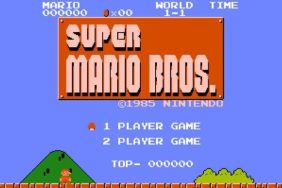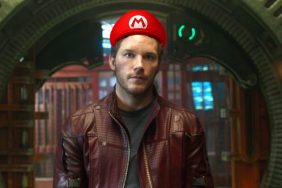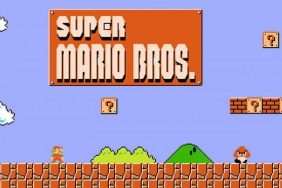The amount of time it takes to develop a Super Smash Bros. title is something I’ve recently taken particular interest in. It’s not as if Smash is home to famously long development cycles or botched delays and release dates, either. Work on the Wii’s Super Smash Bros. Brawl began in October of 2005, and a mere 28 months later, the game had made its way to store shelves in North America. The latest edition, Super Smash Bros. for Wii U, upped the ante to 32 months, with 30 of them simultaneously spent developing a Nintendo 3DS version that, in theory, would look, play, and feel just like its console brother.
Given the colossal work associated with such a task, I’d always assumed planning and early development of the latest Smash must have begun shortly after Brawl’s release in 2008. As it turns out, not a single line of code was committed until series director Masahiro Sakurai had finished work on Kid Icarus Uprising… in March of 2012. Let’s face it — Sakurai is far too efficient a game designer to spend an eternal six years on a project. His creative wellsprings would probably dry up and crack just thinking about it.
What matters now is that Smash Bros. for Wii U is here, and if you felt the 3DS edition was at all lacking in size, scale, or general grandeur (I know I did), then Super Smash Bros. for Wii U is here to dazzle you with its 1080p, 60fps party-fighting magic, running flawlessly on Wii U as if it were a force twice its graphical power and size. Home console Smash is many things, but chief among them is epic; a rare example of that tired and worn-out word used properly. Not convinced? Take the new version of Final Destination for a spin the first time you select a stage. It’s epic in the truest, purest sense imaginable.
A Blend of Old and New

I’ll tackle gameplay first, because despite its enduring similarities across Smash Bros. titles, the technical differences between versions are among the most discussed aspects of any one of the Smash Bros. games. The summarized run-down is that generally, Melee is known to be fast and competitive, while Brawl is seen as slower, more defense-based, and prone to the dreaded “feature” known as tripping. I’ve always been partial to Brawl myself, yet even I pretty much agree with those assessments.
With Smash on Wii U, Sakurai promised a logical evolution that balances the speed of Melee with the temperament of Brawl, and the fact that the game achieves this with flying colors is amongst its greatest strengths. For my tastes, this Super Smash Bros. feels the best of any yet created, and after the first ten or so hours I was ready to leave both Melee and Brawl in the dust, permanently. It’s that good.
After the first ten or so hours I was ready to leave both Melee and Brawl in the dust, permanently. It’s that good.
On Wii U Smash Bros. appears to have reached a new stage of focus and maturity, trimming unneeded fat where necessary and using the extra time and resources to iterate and tessellate on itself endlessly, to the point that the sheer amount of content contained on the disc is itself both impressive and overwhelming. A traditional “campaign” ala Melee’s Adventure and Brawl’s Subspace Emissary has been welcomely axed, with the return of specialized Events, a wickedly fun re-imagining of Classic Mode, two entirely new modes called Master Orders and Crazy Orders, a Mario Party-esque board game called Smash Tour, a new take on All-Star mode, numerous one-off minigames like Home Run Contest and Target Blast, and more in its place.
Oh, did I mention that the majority of these can be played co-op, including Classic Mode? Because they absolutely can. There’s more I haven’t mentioned, but I simply can’t discern a way to talk about everything while also keeping this review at a reasonable length. It’s the first time I’ve had that problem, and I don’t expect I’ll have it again. Thanks alot, Smash Bros.
The Core of Smash
As awesome as the content overload is, a large subset and possible majority of Smash buyers are going to spend most of their time simply clicking the giant red “Smash” button on the main menu and endlessly battling their family and friends. Super Smash Bros. for Wii U is well aware of this, and delivers the goods not just via its upgraded fighting engine and best-ever character balancing (thanks, Namco Bandai), but with enhanced presentation, production value, and astonishing levels of detail that I’ll admit I didn’t quite expect. “Smash in HD” is a label that, while accurate, doesn’t do the entire package justice.
That’s largely because this high-level presentation, this unabashed videogame craftsmanship, permeates nearly every nook and cranny of the game. Everything from the super-detailed fighter portraits on the character selection screen to the bevy of useful, chaotic, and downright hilarious new items exudes attention and thoughtfulness. It’s easy to assume that something like the X Bomb was mindlessly tossed in by a few bored developers who had finished their assigned projects early. But then you realize the X Bomb has a startlingly consistent penchant for leveling the playing field in 8-player matches at just the right time, its angled beams striking and disposing of half the people (or CPUs) playing on a regular basis. These moments are not coincidences, but rather the result of hundreds of hours spent playtesting, tweaking, adjusting, experimenting, and more than likely scrapping when something just wasn’t working. It’s the sort of fearlessness great games thrive on, and here its presence is strongly felt throughout.
“Smash in HD” is a label that, while accurate, doesn’t do the entire package justice.
I mentioned Final Destination earlier, and I want to emphasize that this new re-imagining of the stage truly is a sight to behold. Other stages look great too (the 9-Volt bedroom arena from Game & Wario is among the most strange and creative new locales in the game), but something about the latest “Final D” rings a triumphant Smash Bros. bell that was conspicuously absent with the 3DS version. 2014 has been an odd year for video games, and as the massive earth and sun in the stage’s background reach critical mass, collide, and implode, the battle down below wages on, blissfully ignorant to the chaos unfolding all around it. I think there’s a sappy metaphor in there somewhere, but I suppose what I’m trying to say is that while Smash Bros. has always been a love letter to Nintendo, its franchises, and its fans, this time around Sakurai and company have widened their scope. Super Smash Bros. for Wii U is a love letter to gamers, and if that’s a word you identify with, then you’ll surely find something to appreciate.
Quality Before Quantity, or Just Add Both

There’s more to this puzzle than meets the eye, but as mentioned earlier in the review, the massive amount of content makes describing every gameplay mode in detail an unrealistic task. What I will say is that 8-player battles are a huge score for the franchise, and in my time testing them I experienced minimal lag or slowdown. The only instances were during signature Smash moments of pure insanity (now made more absurd by the boosted player count), where four players were clubbed offscreen by a Home Run Bat while a Smart Bomb simultaneously imploded as Little Mac morphed into Giga Mac and began to wreak havoc. In other words, any time noticable bouts of slowdown occurred, I was too busy rollicking in my chair, pointing and laughing at the screen to be particularly bothered or take much notice.
Related: You’re Not Ready for Super Smash Bros. On Wii U
By now you should have a pretty good idea of what you can expect, and the only gripes I can really muster are more unknowns than specific complaints or negatives. Unlike the 3DS version, Super Smash Bros. for Wii U didn’t launch in Japan first, meaning online functionality doesn’t go live until after reviews have already been posted. I’ll be sure to update the review if there’s anything catastrophic to report, but my expectation is that the experience will be on par with the 3DS version — serviceable if the participants have reasonable-quality internet connections. Unfortunately, I wasn’t able to test amiibo functionality either, but when Amazon drops a box of them on my doorstep on the 21st, I’ll be sure to deliver some impressions. If you’re curious, then definitely stay tuned.
Conclusion
There’s little more I can say to express my immense enthusiasm for what Nintendo, Sora Ltd., and Namco Bandai have managed to pull off with Super Smash Bros. for Wii U. It does everything a console’s flagship title ought to, with rock-solid gameplay that iterates and improves upon its predecessors, and a truckload of content and unlockables that you could easily spend years fully digesting. Its visuals are gorgeous and colorful with top-notch production value, and the overall experience is such that it leaves you wondering if the game’s $60 price tag was part of some half-off Black Friday sale at Wal-Mart.
Gamers often talk about the importance of games that respect the player. I value that too, but recently I’ve grown to appreciate games that respect themselves enough to deliver a content-rich, polished, and high-quality product the day they’re made available. Super Smash Bros. for Wii U has the audacity to not just heed these core tenets but go beyond them, and the result is a milestone Super Smash Bros. release, Wii U’s best game, and a serious Game of the Year contender come December. If you’ve appreciated (or resented) a video game recently, find a way to play Smash — your gaming subconscious with thank you for it.

Griffin Vacheron is an Associate Gaming Editor for CraveOnline. You can follow him on Twitter @novacav.
Copy provided by publisher. Super Smash Bros. for Wii U is exclusive to Wii U.






